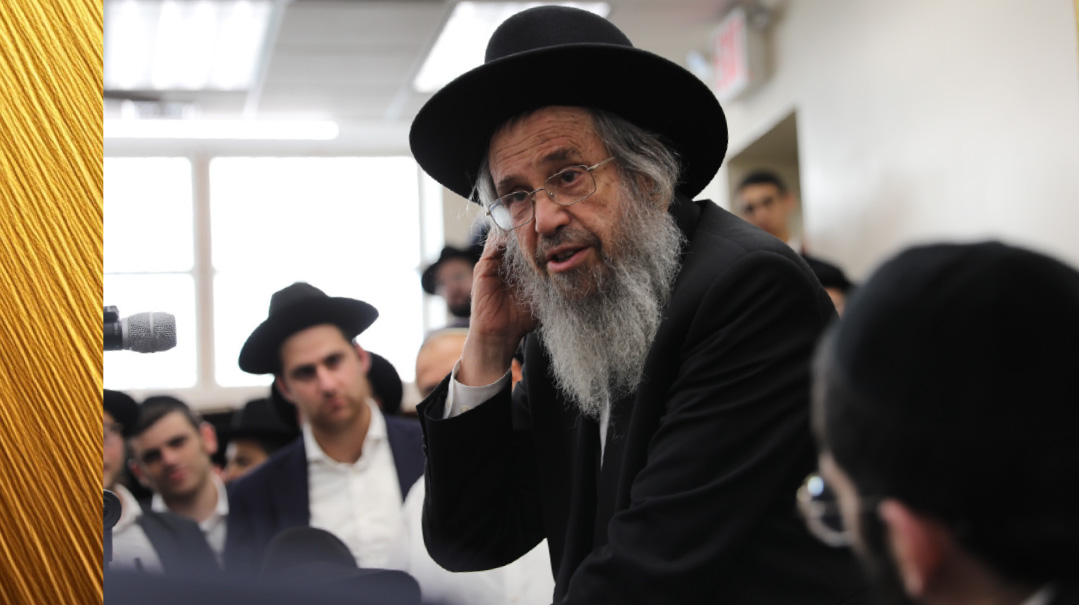Man of the People

Chevron Rosh Yeshivah Rav Dovid Cohen answers some burning questions

Photo: AEGEDOLIM PHOTOS
"Announcing malchus Shamayim saves us from destruction"
The gifts of Rav Dovid Cohen have taken him beyond the walls of Yeshivas Chevron to become a Man of the People. As Klal Yisrael concludes one of the most difficult years of recent memory, the Rosh Yeshivah answers some burning questions
Bnei Torah living in Eretz Yisrael circa 1990 recall the day a new sefer hit the shelves. Titled simply Yemei Purim, it was the sefer’s author who sparked excitement. Rav Dovid Cohen had grown to become a household name in the halls of Eretz Yisrael’s many yeshivos; it was under his dynamic influence that Yeshivas Chevron was rapidly blossoming into one of the world’s finest Torah institutions.
Given his reputation as a world-class lamdan, an easy presumption was that Yemei Purim was a collection of novel insights into the various halachic discussions related to Purim. One logically expected it to be a sefer replete with conventional, yeshivah-style lomdus.
Those who opened the sefer were shocked by what they saw. A plethora of sources leaped forward, quotes from the Vilna Gaon, Ramchal, Maharal, and so many others — all of which uncovered layer after layer of depth concealing the secret meaning of Purim and all its mitzvos. This wasn’t a sefer of lomdus, it was a sefer of machshavah.
At the time, this was nearly unheard of. The seforim of Rav Yitzchok Hutner had been published by that point, but, other than that, hardly any sifrei machshavah existed.
With time, the study of machshavah would grow to become highly popular, even mainstream, but the seforim of Rav Dovid Cohen — gradually to reach double-digits — stand out within the crowd.
Their brilliance lies not merely in the depth of their insight, but also in their fluency in innumerable seforim of previous generations.
The Gemara in Horayos (14a) debates which sort of talmid chacham is superior — a Sinai or an oker harim. A Sinai, explains Rashi, is one whose familiarity in “the Mishnayos and baraisos” is as clear as if it comes directly from Har Sinai. An oker harim, literally translated as “uprooter of mountains,” is one whose familiarity with Torah sources is less prolific but who wields an intense power of analysis.
This question was sent from Bavel to Eretz Yisrael and the response came: A Sinai is superior, for “Hakol tzerichin l’marei chitaya” — everyone needs the “owner of the wheat.” Without the Sinai — absent the one who knows everything — Torah cannot properly flourish.
Rav Dovid Cohen’s seforim exhibit the qualities of both Sinai and oker harim. The ideas he presents, and the sources they are based upon, are the foundation upon which so many of today’s sifrei machshavah stand.
They all need him. “Hakol tzerichin l’marei chitaya.”
As time passed, these same talmidim who were shocked by the novelty of Yemei Purim were in for another surprise. It may have been a pashkevil posted in Meah Shearim, or a picture in Yated Ne’eman, but it appeared that Rav Dovid Cohen, Sinai and oker harim, had taken his gifts beyond the walls of the Chevron Yeshivah. Suddenly, he was everywhere, speaking, teaching, advising, representing; he had become a Man of the People.
Oops! We could not locate your form.







